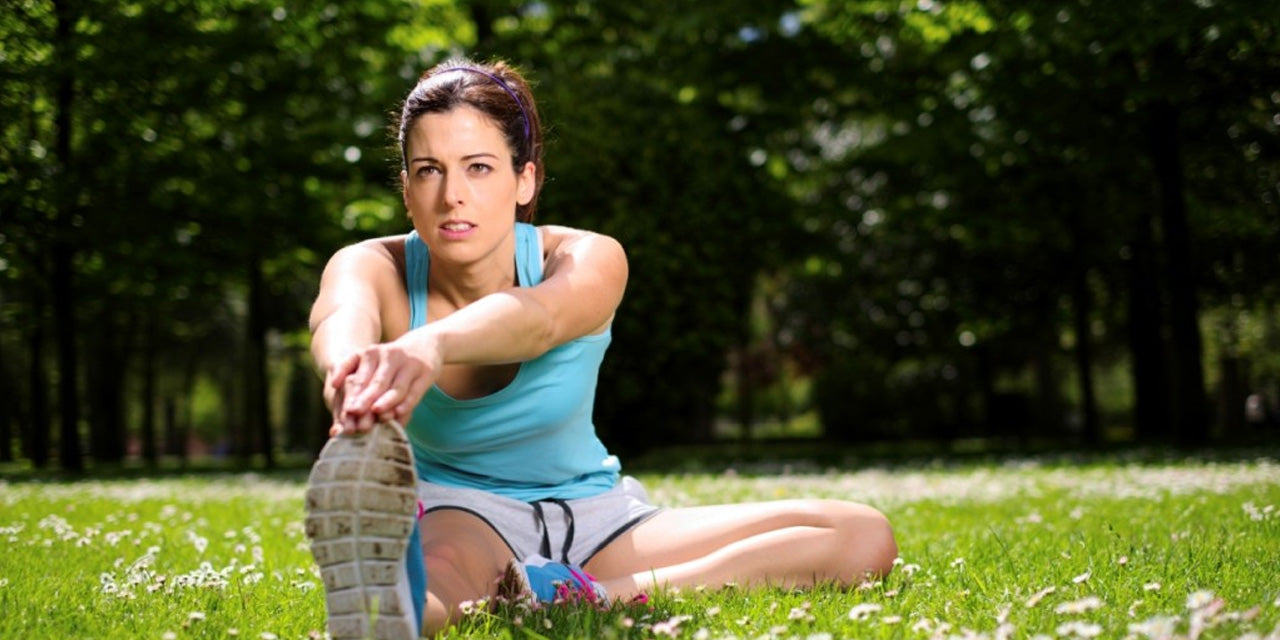Stretching has received lots of bad press recently. New research has created a glut of new and old information that can be bewildering. You might be tempted to throw up your hands and forgo stretching entirely.
Don't give up on stretching! A greater range of motion can help you achieve better form. In turn, you will challenge all your muscles more effectively and safely. It's only a question of how to best increase your range of motion. Science is always learning more about our complex muscular system. Specifically, there is new data on how muscles work together with the nervous system and connective tissue, or fascia.
Read on to find out more about the types of stretching and best practices to keep you healthy.

Passive-static stretching vs. active-static stretching
A growing body of research has shown that the increased flexibility from an intense session of passive-static stretching is only temporary. This does not translate into gains in the long-term range of motion (ROM). Passive-static stretching is pushing the muscle to its furthest limit and holding it there for a period of time while the body is at rest.
Not only is this ineffective, but it can also destabilize muscles and inhibit strength and power to lead to an increased risk of injury. If you want to keep passive-static stretching as part of your routine, move it to the end of your workout.
Conversely, active-static stretching can be much more productive. This is the kind of stretching you see most often in active yoga poses such as the warrior series or in holding a simple lunge. We'll take a look at active-static stretching, a technique that uses the antagonistic muscle for counter support.
Another unhelpful stretching practice is ballistic stretching, a technique that uses momentum to force the muscles to extend. These are the kind of jerky movements many of us were taught to perform in gym class. This kind of stretching is a no-no under any circumstance and a recipe for injury.
Stretching best practices
There are some beneficial stretching practices backed by science and sports medicine that are also supported by traditional yoga modalities. Think about integrating stretching holistically into your strengthening and conditioning program instead of taking it on as an afterthought.
Here are the basics:
- Warm-up: Warming up is the best strategy for decreasing injury and preparing the muscle for strength training. Aim for a short, comprehensive warm up that engages all the areas you will be training. A rowing machine is great for back and arm workout. An elliptical machine can get the blood in your legs pumping. Jumping jacks and light aerobics can get your whole body primed for an all-body strength program.
- Dynamic stretching: Dynamic stretching, a technique that builds strength at the end of each contraction and extension, works with muscles when they are warm and pumped and can also help break into the tough fascia that muscle tissue is embedded in. This kind of active stretching improves functional ROM while adding strength and flexibility. Dynamic stretching can be incorporated into any strength move by using muscle strength to extend the range of the movement. For example, in a dumbbell curl you would focus on fully expressing the lengthening extension while contracting the muscle powerfully when bringing the arm back to the body. Using weights to build range of movement often requires you to drop the load down below what you may be used to lifting, but the extra power and strength you'll earn will surprise you.
- Active-static stretching: A great example of active-static stretching is the superman extension. Use the antagonistic muscle's strength to stretch the opposing muscle -- this can be as simple as opening the chest with your arms extended while squeezing your back muscles together. You won't be able to stretch as deeply as you might using a wall or floor as a brace, but the muscle strength you build at the end of your range will bring you lasting gains in ROM. Employ this technique when you are finished working the muscle group you are stretching.
- Relaxed-passive stretching: Relaxed-passive stretching uses gravity or props to gently open up the muscle after you are finished with your workout. You can open up your chest and back by stretching over an exercise ball, or you can rest with your legs extended up a wall. This approach is similar to restorative yoga, and you should be able to relax into the pose for several minutes without any tension or discomfort. You could also ease into a low squat with your back supported by a wall. Again, it should not be painful, and you shouldn't be striving to force your muscle to its deepest extension. You should be able to breathe deeply and even have a casual conversation.
Mind over matter
Engaging your mind is essential. Don't forget to breathe and stay hydrated. Dry tissues and muscles are naturally more prone to damage. A steam or soak in a warm bath with mineral salts and some gentle self-massage can help with reducing soreness and will help you work into stiff tissue.
Remember, each individual is unique. Set realistic goals and be gentle with yourself.



Share:
What is K.O.P.S.? Knee Over Pedal Spindle
Working Out With The FTS Glide